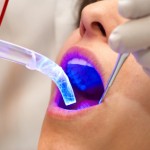
A number of premalignant malignant oral lesions (eg, leukoplakia, erythroplakia, verrucous hyperplasia, sub-mucous fibrosis) have been identified. A range of treatment approaches have been suggested for their management including, laser ablation, cryotherapy, and surgical excision.
Photodynamic therapy (PDT), which involves interaction between a light source and chemical dye or photosensitiser in the presence of oxygen, has been suggested as a treatment for potentially malignant oral lesions, but there is some controversy over its effectiveness.
The aim of this review was to assess the efficacy of PDT in the management of oral premalignant lesions.
Methods
Searches were conducted in the PubMed/Medline, Google-Scholar, Embase and ISI Web of Knowledge databases. Original clinical interventions studies involving PDT in the management of oral premalignant lesions published in English were considered.
Results
- 13 studies involving 512 patients were included. Sample sizes ranged from 5-147 patients.
- PDT was the sole therapeutic strategy in 12 out of 13 studies
- Postoperative follow up period ranged from 5 months up to 7.3 years
- Diode lasers, light emitting diode (LED) and dye lasers were used
- The frequency of PDT application ranged between once and 12 times.
- Response ranges and recurrence rates are shown in the table below
| Response |
Range |
| Complete |
27% to 100% |
| Partial |
5% to 50% |
| No response |
0% to 25% |
| Recurrence rate |
up to 36% |
Conclusions
The authors concluded
PDT is a useful treatment strategy in the management of oral premalignant lesions. However it is emphasized that other contributory factors such as size of the lesion, site of the lesion, dysplastic potential, consistency of lesion and tobacco/alcohol habits are significant factors that influence the overall success of PDT for the management of oral pre-malignant lesions.
Commentary
Only English language studies were considered and while two reviewers assessed the studies for inclusion it is not clear if this was done independently or whether the studies were assessed for quality. Only one of the included studies had a control group (treated with cryotherapy) so all the other included studies could be considered to be case series and one would be concerned regarding the potential for selection and observer bias particularly in light of the subjective nature of the outcome recording (complete/partial/no response).
In view of the poor quality of the available studies a more accurate conclusion would be that there is insufficient evidence to determine the effectiveness of PDT for the management of oral premalignant conditions and recommend that high quality randomised controlled trials are conducted.
A 2008 Cocnrane review by Fedorowicz et al looked at the effectiveness of interventions for just oral-submucous fibrosis and only identified trail of two agents and they concluded: –
The lack of reliable evidence for the effectiveness of any specific interventions for the management of oral submucous fibrosis is illustrated by the paucity, and poor methodological quality, of trials retrieved for this review.
Links
M Clin Dent FV, Al-Kheraif AA, Qadri T, Hassan MI, Ahmed A, Warnakulasuriya S, Javed F. Efficacy of photodynamic therapy in the management of oral premalignant lesions. A systematic review. Photodiagnosis Photodyn Ther. 2014 Oct 11. pii: S1572-1000(14)00126-4. doi: 10.1016/j.pdpdt.2014.10.001. [Epub ahead of print] PubMed PMID: 25315968.
Fedorowicz Z, Chan Shih-Yen E, Dorri M, Nasser M, Newton T, Shi L. Interventions for the management of oral submucous fibrosis. Cochrane Database of Systematic Reviews 2008, Issue 4. Art. No.: CD007156. DOI: 10.1002/14651858.CD007156.pub2.

Don’t miss: SR finds insufficient evidence on photodynamic therapy for oral premalignant lesions http://t.co/SMRKk4Kur0